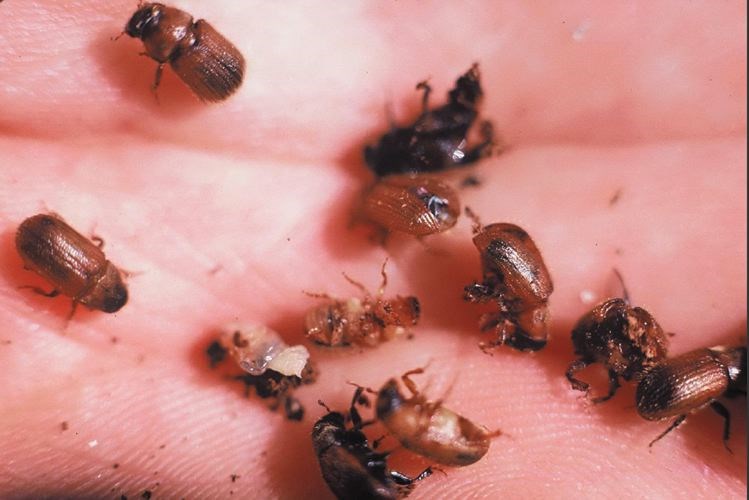Approaches to forest management must change if B.C. wants to end bug outbreaks sooner, said the closing speaker at a two-day summit on managing the spread of spruce beetles.
"We need to keep the system in focus and remember the beetles are always there. They may not always kill trees but we need to act as if they're going to very soon," Staffan Lindgren, a retired University of Northern B.C. professor, told the group gathered Thursday at the Ramada in Prince George.
Management focuses too much on the agent - the beetle - when most focus should be on mimicking natural ecosystems and looking at what the beetle needs to survive.
"We should be managing a forest ecosystem not just the trees in the forest," Lindgren said. "Unfortunately in forest health we've had kind of a boom and bust. We've just gone through the mountain pine beetle outbreak with tons of resources and money and research money and everything but what we need is a steadier approach to bark beetle management."
Simplified stands create a better environment for the beetles to thrive and mulitiply.
"If you create the monoculture, they have a better situation and can do better," he said.
"Stand structure can be incredibly important."
The spruce beetle is especially difficult because trees don't show signs of their presence until a year or even 18 months after the beetle has burrowed in.
"By the time you start recognizing that you have spruce beetle, they're several generations into the outbreak," he said.
Recent data for the Omineca region showed 210,000 hectares of forest damaged by the bug, up from 156,000 in October 2015.
The region contains nine million hectares of forest, with 4.7 million hectares available for logging.
Spruce represented about 22 per cent of the average annual timber harvested in B.C.'s Interior over the past five years.
Tim Ebata, a forest health officer with the ministry, said the goal of the summit was to share the best science for detection, the beetle's biology and discuss what isn't and isn't working.
"We've learned a lot from the past but we've still got a lot of questions," he said, adding the ministry is still working with licensees to decide how it will approach harvesting counts and it's very important government work in collaboration with industry to manage the outbreak.
"(We're) concerned about spruce beetle because of the timber supply shortage, particularly Prince George is facing," said Ebata of the supply area, which represents the largest in the province.
In June, a ministry report to Prince George city council forecast the annual allowable cut for the Prince George timber supply area diving from the current 12.5 million cubic metres available since 2011 to an expected 6.2 million cubic metres in 2020.
"Licensees are the main treatment tool. Sanitation harvesting is the main tool in trying to address the problem," he said, a term which means to try and prevent the spread often by falling trees to draw the beetles away from standing trees, which the bugs are less attracted to.
"(The licensees) are the only ones that can really put in the trap trees," he said.
Access to the affected trees can be difficult and their presence in wet landscape means some can't be removed until the ground hardens in winter.
Research by Robert Hodgkinson and Lindgren suggested it's still smart to fall the trees - even if they can't be extracted from the area right away - to buy time. Significantly more bugs emerged from standing trees - up to 62 per cent compared to 17 per cent from the felled trees, Hodgkinson said.
On Wednesday Hodgkinson, a forest entomologist from the Ministry of Forests & Natural Resources, said because of a warm spring an estimated third of this year's new crop of beetles would mature early and take flight with the beetles on the standard two-year life cycle.
"(That) will certainly intensify the outbreaks in a similar fashion to what happened with mountain pine beetle," Lindgren said.



